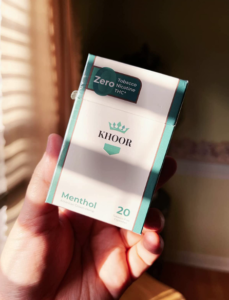
Herbal Smoking Wellness: All You Need to Know
Explore the benefits and tips of herbal smoking wellness with information on health impacts, botanical choices, and DIY blends.
What Makes US Hemp the Best in the World? Why do we only use hemp from the US for our cigarettes? Why not purchase hemp produced in the UK, Japan, or another country?
In contrast to hemp farmed in other countries, the US variety has a number of advantages. To discover why, keep reading…
Hemp has a very long history in America. Since the country’s inception in 1776, hemp has been produced in America, though it’s possible that uncultivated hemp was present there for many years prior to that. Jacques Cartier, a French explorer who arrived in North America about 1540, described the following scene:
Fast-forward to the late 1700s, when America was still a young country with a similarly young economy supported by its farmers and fortified by its agriculture. Hemp played a crucial role in this development and was recognized as such a lucrative cash crop that in some places it was required to be grown. The legendary quote from George Washington, “make the most you can of the Indian Hemp seed and grow it everywhere,” demonstrates his unwavering support.
However, things started to change by the 1930s. Conflicts with other large corporations led to smear campaigns and fear mongering against the entire cannabis family, including hemp.
Although the ban on hemp was tolerated, many didn’t exactly appreciate it. Boards of medicine objected. Botanists and farmers both did. Particularly heavily struck was Kentucky, which had grown hemp for as long as the US had existed.
The hemp plant and its advantages seemed to vanish out of thin air. With the passage of the Controlled Substances Act in 1971, which ill-advisedly lumped hemp in with heroin and LSD, things only got worse.
But by the 1990s, things had really begun to improve. The discovery of the human Endocannabinoid System restored the legitimacy of the cannabis plant in the eyes of science and reignited interest in its cultivation.
The main factor making US-grown hemp the greatest in the world is that, although being dubbed “industrial hemp,” it has no industrial characteristics.
In other words, the majority of hemp grown in the US is grown particularly for its terpene, THC, and CBD content. Additionally, an increasing number of US farmers are starting to diversify and produce hemp for heretofore uncommon cannabinoids like CBG, CBN, etc.
Although Europe has a longer history with hemp than America does, EU hemp actually tends to live up to the “industrial” moniker. The majority of it is planted for use as building materials, fiber, or animal feed. The fact that most European hemp has historically been restricted to a 0.2% THC limit (as opposed to 0.3% in America and 1.0% in Switzerland) makes the situation much more difficult.
Within the constraints of such a low THC limit, it is challenging to grow resinous, CBD-rich hemp. Most farmers, scientists, and researchers in Europe have responded by cultivating hemp cultivars with a high content of fiber or seeds. Although the EU recently increased its hemp THC limit to a more typical 0.3%, experts in the business say it may take some time for the region’s hemp to catch up.
Since industrial use of hemp in the US has historically expanded, there is a need for both public and private quality standards and certifications.
Despite barriers to regulation on both sides of the Atlantic, US regulations now in place have permitted the progress of CBD technology in both commercial and pharmaceutical usage (re Epidiolex).
And if you’ve had enough reading and are ready to make a purchase, visit our online cigarette store, where you may browse goods based on their flavors or bundle combinations.
SHARE ON SOCIAL!

Explore the benefits and tips of herbal smoking wellness with information on health impacts, botanical choices, and DIY blends.

Explore how KHOOR supports nicotine replacement with herbal cigarettes, success rates, and user stories for a healthier, smoke-free life.

Explore the benefits of quitting tobacco & nicotine with healthy alternatives. Improve your health and well-being with tips and data-backed advice.

Achieve your quit smoking goals with KHOOR’s supportive approach. Discover benefits, statistics, and practical tips for a healthier life.

Explore practical tips to smoke without nicotine, including product recommendations and real-life statistics to support your healthier lifestyle choices.

Explore tobacco-free alternatives with KHOOR. Learn about options like herbal cigarettes, nicotine pouches, and vaping for a healthier lifestyle.